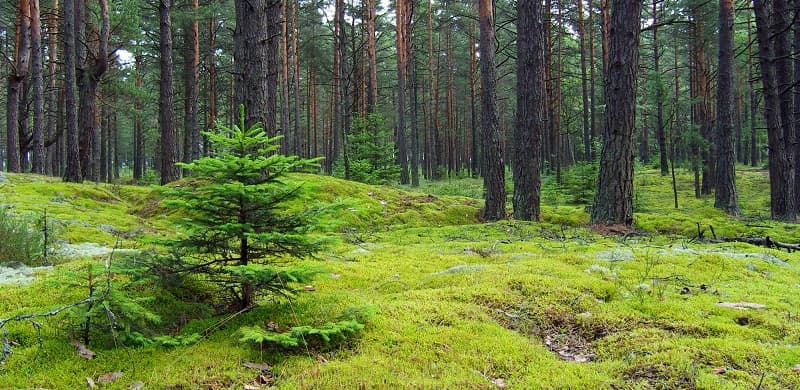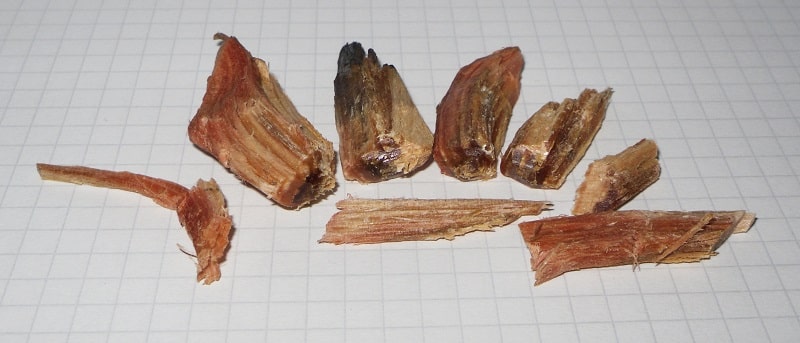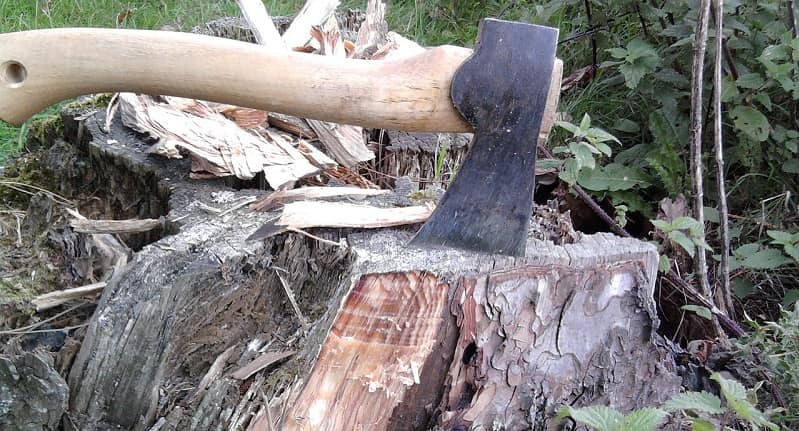Fatwood is a great alternative to commercial firestarters and more effective than many other natural firelighters, like dry grass or kindling.
Let’s find out how this incredible substance can help us.
What Is Fatwood?
Fatwood is an all-natural, water-resistant, chemical-free fire starter sourced from pine or spruce trees.
Fatwood goes by several other names, which confuses the situation further. Some refer to it as pitchwood, others as pine knot, and others as heart pine or lighter wood.
Where Does Fatwood Come From?
Regardless of what you call it, fatwood still comes from the same place – pine trees. While this isn’t the only source, it is the most common. It is, however, possible to harvest fatwood from a few other resinous spruce or conifer trees and even some types of cedar.
Fatwood has been used for generations to start fires and provide a source of light.
If you took a trip back in time to the 1500s to 1600s and visited a member of the Rappahannock Tribe in Virginia, you’d find their “huts were lighted by the means of ‘fatwood,’… stuck into a gourd bowl partly filled with clay.”
These days, we’re more likely to get light from a headlamp, but it’s difficult to hold a torch to fatwood’s flammability when it comes to making a fire.
Where’s The Best Place To Find It?

Fatwood comes from the heartwood of pine trees. When a pine tree is chopped down or dies a natural death, the sap and resin flow into the remaining stump.
Both the sap and resin contain high concentrations of natural turpentine, which is highly flammable. So, if you’re trying to figure out how to start a fire without matches or a lighter, using fatwood is one of the most effective approaches.
Even when snow is on the ground, the pine tree stump will remain dry, so you can start a fire with fatwood even in the depths of winter.
That is, assuming you can find it in the first place.
A pine tree that’s died naturally provides a better source of fatwood than one that’s been chopped down. This is because a dead tree will remain standing longer than a harvested one, impregnating the trunk with a higher concentration of sap or resin.
How Will I Know It When I See It?

You’ll know you’ve found fatwood when the pungent aroma of turpentine overwhelms your senses.
While the rotten wood around the center has an earthy smell, the fatwood in the heart of the tree is imbued with resins known as monoterpenes. One is pinene, responsible for the pine’s piney smell, while the other, limonene, releases a citrusy odor.
Old, dry trees are the best source of fatwood because the resin has had more time to respond to gravity and accumulate in the base.
Weather conditions and elevation also significantly impact the amount of fatwood you’re likely to find in a pine tree stump.
In some instances, you may find the smaller branches of a fallen tree contain enough fatwood to get a fire started or as a solution to the problem of how to make a torch in the woods.
Your best bet, however, is to keep searching until you find an old, dry stump standing alone. If the rest of the tree has already rotted, the remaining stump might contain a high concentration of fatwood, which has preserved it against the elements.
Once you’ve identified a potential source of fatwood, it’s time to start harvesting.
How To Harvest Fatwood To Light Your Survival Fire

As fatwood is situated within the heartwood or center of the tree, you’ll need to remove any bark or rotten wood from the stump to access it.
The easiest way to do this is with a survival axe. Scrape away the rotten, crumbling wood until you reach the center of the stump.
If there’s fatwood in there, you’ll soon know about it from the smell. Fatwood is also hard and almost caramel-colored, whereas rotten wood will be darker and more earthy in appearance and fragrance.
As the resin has protected the fatwood against decomposition, it will be hard, making it difficult to remove. However, by digging down a little deeper, you should be able to uncover some of the taproot, which also contains flammable resin.
Remove as much fatwood as possible, using a portable survival shovel to dig out as much of the taproot as possible.
Once harvested, you must clean the rotten wood from your fatwood firestarter.
Using a bushcraft knife, scrape away any crumbly, earthy-smelling wood until all that remains is the clean, caramel-colored fatwood itself.
Fatwood with a high resin concentration will appear almost red rather than caramel, which is ideal for starting a fire in damp conditions.
You can now use shavings of the fatwood to get your survival fire going and keep it burning. With a survival lighter and a few strips of fatwood, you can have a fire started in seconds.
Alternatively, you can follow these experts’ tips for using a Ferro rod fire starter and get your fire going that way instead.
You can also add strips or pieces of fatwood to your bug-out bag so it’s always close to hand when needed.
If locating and harvesting fatwood seems too arduous, you could spend a few dollars on commercial fatwood firelighters or firestarter kits and add those to your bug-out bag instead.
What Are The Benefits Of Fatwood, And Are There Any Negatives?
Fatwood is a natural, chemical-free firestarter that, unlike many commercial gels, waxes, and firelighter cubes, doesn’t release toxins or unpleasant fumes when burning.
On the other hand, most commercial fire starters contain kerosene or other petroleum distillates that may taint your food or cause an allergic reaction when handled.
Fatwood also works when wet, which many other fire starters won’t, and is quicker to catch alight than most other products.
Fatwood is a healthier alternative to most fire-starting products and can be used safely indoors and in a survival situation. It also keeps well and won’t disintegrate like commercial firelighter cubes.
The only negatives about fatwood are that it can be challenging to locate and even more tricky to harvest.
Conclusion
Fatwood may not be the easiest fuel to find, but if you’re lucky enough to strike gold, you’ll have a durable, rot-resistant, and waterproof firelighter that you can take camping with you or pop into your bug-out bag.
Also read our guide to seven other useful trees for survival.




your state forestry or other state agencies can tell you where different species of pine trees can be found in your area. state parks can be fatwood goldmines once you know what you are looking for.
We live in Colorado. There is significant pine kill due to beetle activity.
Question is, would one be apt to find and harvest fat wood from the roots of the fallen trees.
Thanks for the article, very informative.
By all means, leave the living trees to their business, you’ll breathe better for it
Hello,
Thank you for the article, I found it very informative.
Do certain areas or regions produce better fatwwod?
I ask because I’m looking to purchase some pre made sticks off Amazon and some companies source them from the jungles of Mexico while some are in the U.S.
Thank you,
I have a rather large white pine in my back yard that is at least 12 years old and standing. Would this make for a good candidate for harvesting fat wood?
It would be a damn shame to cut down that tree! I’d go for a hike in the woods and look for a fallen tree instead. Trees that died naturally are better sources of fatwood anyway.
No. You will get little if any fat wood from a live tree. However you will get it from branches the tree has shed.
Look at the ground around the tree for dead fallen limbs and look at the base where you may find fat wood. I do not suggest trying to harvest the branch bases of these limbs off the live tree as you may injure or kill it and that is irresponsible when there are masses of fat wood lying around once you get used to how to locate it